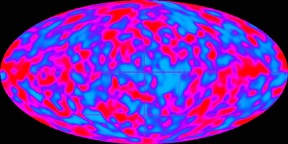
Image from the cover of
Science, 8 June 2001.
The Royal Swedish Academy of Sciences has awarded the 2006 Nobel Prize in Chemistry to
Roger D. Kornberg, Stanford University, CA, USA for his studies of the molecular basis of eukaryotic transcription.
From the Nobel Prize web site, October 4, 2006:
"Transcription is the process of copying information that is stored in the genes and transferring that code to outer parts of the cell. There it is used as an instruction for protein production. Roger Kornberg was the first to create an actual picture of how transcription works at a molecular level in eukaryotes (organisms whose cells have a well-defined nucleus).
"Transcription is necessary for all life. If transcription stops, genetic information is no longer transferred into the different parts of the body. Since these are then no longer renewed, the organism dies within a few days. This is what happens in cases of poisoning by certain toadstools, since the toxin stops the transcription process. Understanding of how transcription works also has a fundamental medical importance. Disturbances in the transcription process are involved in many human illnesses such as cancer, heart disease and various kinds of inflammation."
Roger Kornberg has published well over 200 research papers, including at least 70 that include
transcription in the article title (
Science Citation Index, search
kornberg rd as author and
transcription as topic, limited to title). His papers include many published in
Nature, Science, Cell, PNAS, Biochemistry, and dozens of other prestigious journals. All together, his articles have been cited by thousands of other researchers. See these records in SCI, for example:
Cramer P, Bushnell DA, Kornberg RD
Structural basis of transcription: RNA polymerase II at 2.8 angstrom ngstrom resolution.
SCIENCE 292 (5523): 1863-1876 JUN 8 2001
Gnatt AL, Cramer P, Fu JH, et al.
Structural basis of transcription: An RNA polymerase II elongation complex at 3.3 angstrom resolution,
SCIENCE 292 (5523): 1876-1882 JUN 8 2001
An image from the paper co-authored with Gnatt, et al., was adapted for the cover of that issue of Science (shown above).









